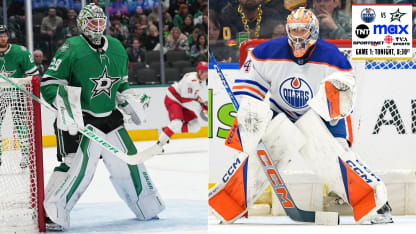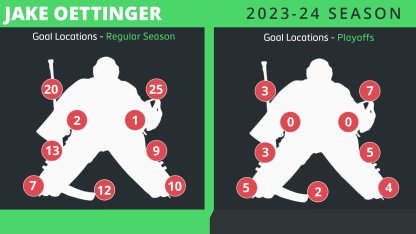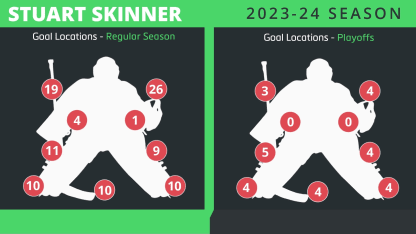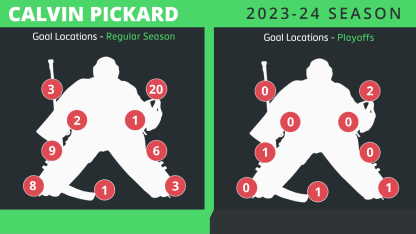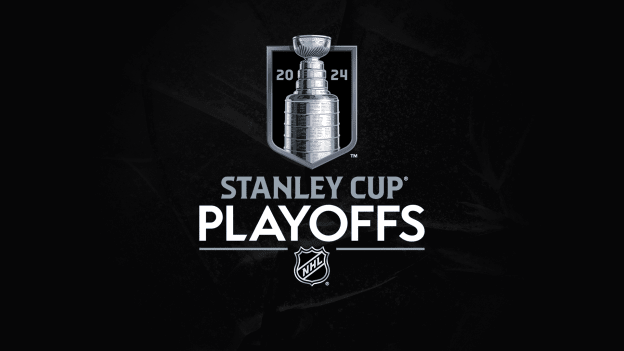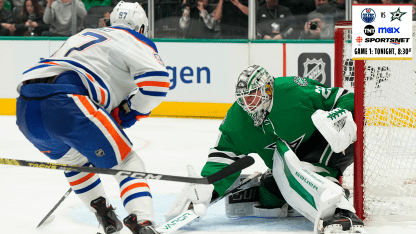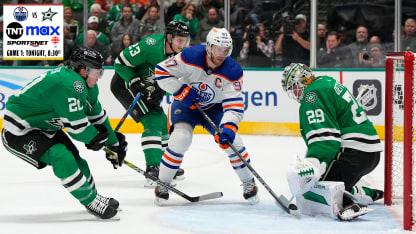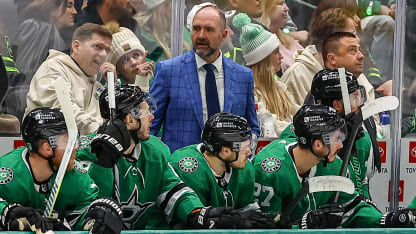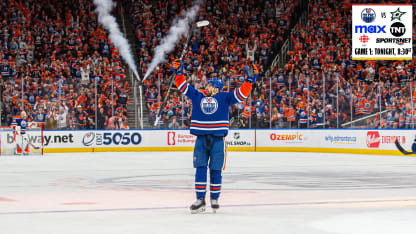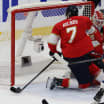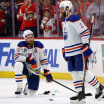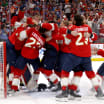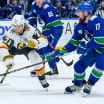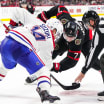Traffic and scrambles: Screens are always a big part of playoff scoring and while Oettinger has typically excelled managing traffic, some of the broken-play scrambles on pucks that don’t get through to him left him stranded atop the crease against Colorado and played a role in 6-of-15 goals. That brings the playoff total to 10-of-29 (34.5 percent) after 23 percent of the tracked regular-season goals, all well above the 14 percent average.
Watch for overlap on sharp angles: Oettinger gave up 21 goals on low-to-high passes in the regular season, above the 17.1 percent tracked average of the now more than 7,000 goals tracked for this project since 2017, and another nine on sharp-angle plays originating from below the face-off circle. There was inconsistency on his post-to-post transitions and footwork on plays that moved through the middle of the ice from sharp angles and behind the net, and it contributed to those totals by delaying his ability to get out and set on pop passes out front and in-tight lateral plays. He often uses a technique called “overlap” in his post play, keeping his short-side skate outside the post as plays move towards the goal line, flattening out his backside pad along the goal line to prepare for a potential push across, especially when there is a rush element. The overlap can create delays getting across on wraparounds and pass outs after carrying the puck behind the net, which created a couple close calls against Colorado, and can also create short-side high exposure if he doesn’t stay patient with his hands, something Mikko Raantanen took advantage of from a sharp angle to score in Game 6.
Glove side: Seeing the biggest regular-season number over the glove might make it tempting to target, but the reality is these numbers don't represent save percentages, and the 25 high-glove total is only slightly above the 23.6 percent tracked average. The fact that seven of the high-glove goals came on clean looks and another four in 1-on-1 situations in the regular season, however, make it a trend worth watching, especially after Colorado scored 6-of-15 goals over Oettinger’s glove, including a couple of open looks. Overall, the Avalanche scored 12-of-15 goals on the glove side, which may be a coincidence after Vegas scored 9-of-14 on the other side, especially when you consider several came on rebounds and scrambles, but the glove side on open looks could become a trend, and his high, fingers-up glove position means shots just over the pad have also been a popular target.
Five-hole?: The 12 tracked regular-season goals scored between the pads are also right around average, and there have only been two in the playoffs, but there was a trend in some of the open-look goals between the legs worth watching, even if it appears to be one of the things corrected in the late-season surge. Oettinger sometimes retreats before the shot with a double reverse c-cut that widens out his stance and puts him on his heels as he moves, pulling his shoulders back off the release and making it harder to get the pads to the ice to close that five-hole. It was evident when Avalanche defenseman Cale Makar beat him clean between the legs in Game 5, though in that case the retreat was likely caused by preparing for a pass option to his right by flattening out the right pad closer to the goal line.
Low far side off rush: Shooting against the grain accounted for 22 goals in the regular season, above the 18.5 percent tracked average, and 6-of-14 in the first round, though two were tipped, but only 2-of-15 in the second round. A tendency to retreat, or drift, back in straight lines can cause him to flatten out and lose squareness as rushes move deeper into the zone, exposing more net far side. Starting out above the crease and retreating against the rush can also create vulnerability on east-west passes higher in the zone because being further out early increases the lateral distance he needs to cover.
Stuart Skinner
Edmonton Oilers
Skinner was excellent after the Oilers replaced coach Jay Woodcroft and assistant Dave Manson with Kris Knoblauch and Hall of Fame defenseman Paul Coffey on Nov. 12, and a big part of that was the team finally limiting the high-quality rush chances they were giving up far too often at the start of the season. Those types of plays go against Skinner’s biggest strengths, and the Stars have been a great rush team all season, so continuing to limit those chances, like they did against the Canucks, will be key for Edmonton. If not, there’s a chance Calvin Pickard could (below) could get into another series.
